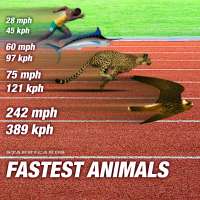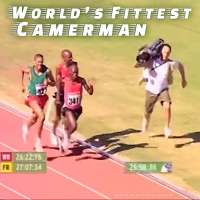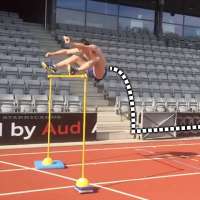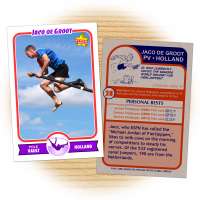In 1954, Roger Bannister famously ran the first sub-four-minute mile with a time of 3:59.4. Fourteen years later, Jim Hines ran the first sub-ten-second 100 meters, crossing the finish line one hundredth of a second under the then fabled barrier. Fast forward to the present day where one running remains unbreached… but barely.
[fusion_title size=”4″]TWO-HOUR BARRIER[/fusion_title]
[fusion_map address=”Monza, Italy” type=”roadmap” map_style=”default” overlay_color=”” infobox=”default” infobox_background_color=”” infobox_text_color=”” infobox_content=”” icon=”” width=”100%” height=”200px” zoom=”6″ scrollwheel=”yes” scale=”yes” zoom_pancontrol=”yes” popup=”yes” animation=”yes” class=”” id=””][/fusion_map]
Running on a flat 1.5-mile Formula One race track in Monza, Italy, Eliud Kipchoge came within half a minute of becoming the first-ever marathoner to break the two-hour barrier. The Kenyan’s time of 2:00:25 is almost two-and-one-half minutes faster than the current world record set in 2014, but Kipchoge’s run won’t supplant countryman Dennis Kimetto’s name in the record book as pacers were employed in the attempt.
[fusion_tagline_box backgroundcolor=”#fafafa” shadow=”yes” shadowopacity=”0.5″ border=”” bordercolor=”transparent” highlightposition=”top” link=”” linktarget=”” buttoncolor=”” button=”” title=”“It’s possible for a human to run under the two-hour mark. I was aiming to run 1:59:59, but I am happy to have run two hours in a marathon.”” description=”— Eliud Kipchoge, after running 2:00:26 marathon” animation_type=”slide” animation_direction=”left” animation_speed=””][/fusion_tagline_box]
[fusion_title size=”4″]BREAKING2[/fusion_title]
Kipchoge’s run at history was part of Nike’s Breaking2 project, which aims to break the two-hour barrier through optimization of conditions (ideal course and weather), high-tech shoes, and exact pacing.
Kipchoge, who won last the 2015 Berlin Marathon with a time of 2:04:00, managed to maintain the necessary pace for the first 19 miles, before losing steam ever so slightly over the final seven.
[fusion_title size=”4″]MARATHON TIME PROGRESSION[/fusion_title]
The following chart shows the world record progression in the marathon by each breach of a 5-minute barrier. A couple of things stand out; first, the flurry of faster times posted from the first officially recorded time in 1908, to 1913 — by which date 17 minutes had already been shaved from the world record, and second, the span of 27-years (1925 to 1952) between the 2:30 barrier and 2:25 barrier being breached.
[fusion_progress percentage=”97.4″ unit=”%” filledcolor=”#F8E8DD” unfilledcolor=”#DDDDDD”]1908 | Johnny Hayes (USA), 2:55:18.4 —[/fusion_progress]
[fusion_progress percentage=”96.0″ unit=”%” filledcolor=”#FFEEDD” unfilledcolor=”#DDDDDD”]1909 | Robert Fowler (USA), 2:52:45.4 —[/fusion_progress]
[fusion_progress percentage=”92.7″ unit=”%” filledcolor=”#F8E8DD” unfilledcolor=”#DDDDDD”]1909 | James Clark (USA), 2:46:52.8 —[/fusion_progress]
[fusion_progress percentage=”90.3″ unit=”%” filledcolor=”#FFEEDD” unfilledcolor=”#DDDDDD”]1909 | Henry Barrett (UK), 2:42:31.0 —[/fusion_progress]
[fusion_progress percentage=”87.9″ unit=”%” filledcolor=”#F8E8DD” unfilledcolor=”#DDDDDD”]1913 | Harry Green (UK), 2:38:16.2 —[/fusion_progress]
[fusion_progress percentage=”84.8″ unit=”%” filledcolor=”#FFEEDD” unfilledcolor=”#DDDDDD”]1920 | Hannes Kolehmainen (FIN), 2:32:35.8 —[/fusion_progress]
[fusion_progress percentage=”82.8″ unit=”%” filledcolor=”#F8E8DD” unfilledcolor=”#DDDDDD”]1925 | Albert Michelsen (USA), 2:29:01.8 —[/fusion_progress]
[fusion_progress percentage=”78.2″ unit=”%” filledcolor=”#FFEEDD” unfilledcolor=”#DDDDDD”]1952 | Jim Peters (USA), 2:20:42.2 —[/fusion_progress]
[fusion_progress percentage=”77.0″ unit=”%” filledcolor=”#F8E8DD” unfilledcolor=”#DDDDDD”]1953 | Jim Peters (USA), 2:18:40.4 —[/fusion_progress]
[fusion_progress percentage=”74.7″ unit=”%” filledcolor=”#FFEEDD” unfilledcolor=”#DDDDDD”]1963 | Leonard Edelen (USA), 2:14:28.0 —[/fusion_progress]
[fusion_progress percentage=”72.0″ unit=”%” filledcolor=”#F8E8DD” unfilledcolor=”#DDDDDD”]1967 | Derek Clayton (AUS), 2:09:36.4 —[/fusion_progress]
[fusion_progress percentage=”69.4″ unit=”%” filledcolor=”#FFEEDD” unfilledcolor=”#DDDDDD”]2003 | Paul Tergat (KEN), 2:04:55 —[/fusion_progress]
[fusion_progress percentage=”66.9″ unit=”%” filledcolor=”#F8E8DD” unfilledcolor=”#DDDDDD”]2017 | Eliud Kipchoge (KEN), 2:00:25* —[/fusion_progress]
*Fastest time ever recorded, but not a world record due to the utilization of pacers.
As daunting as the 2-hour marathon may seem, there is still opportunity to go even faster. Michael J. Joyner, who runs the Human Integrative Physiology Lab at the Mayo Clinic, published a paper in 1991 which calculated that a 1:57:58 marathon was physiologically possible.
[fusion_separator bottom_margin=”8″ style=””]












Leave A Comment